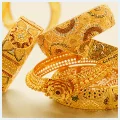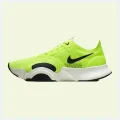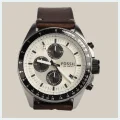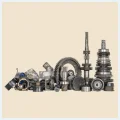












.webp)







The Emergence of Direct-to-Consumer Commerce (D2C) and Its Influence on India's Fashion Industry
Direct-to-consumer (DTC) commerce has experienced remarkable growth in recent years, as more businesses choose to bypass middlemen and sell directly to their customers. This shift has had a significant effect on India's fashion industry, which has traditionally depended on wholesalers and retailers for product distribution. In this article, we will discuss the emergence of D2C commerce and its impact on the Indian fashion industry.

Understanding Direct-to-Consumer Commerce
Direct-to-consumer commerce is a business model in which companies sell their products directly to consumers, eliminating the need for intermediaries like wholesalers or retailers. This approach allows companies to exercise greater control over their products, pricing, and distribution channels, often resulting in cost savings passed on to the customer.
India's Direct-to-Consumer Commerce Surge

India has witnessed a substantial increase in D2C commerce in recent years. This surge can be largely attributed to the expansion of e-commerce platforms such as Amazon, Flipkart, and Myntra, which have simplified the direct sale of products to consumers. Furthermore, the rise of social media platforms like Instagram and Facebook has made it easier for businesses to connect with their target audience and sell their products online.
Myntra: As one of India's leading online fashion marketplaces, Myntra offers an extensive selection of products from various brands. Actively advocating for direct-to-consumer (DTC) commerce, Myntra witnessed a remarkable 68% increase in revenue in FY 2020, reaching Rs. 2,069 crore.
Flipkart: E-commerce behemoth Flipkart has extended its reach into the fashion industry, utilizing its robust online platform for DTC commerce. In FY 2020, the company's fashion segment revenue experienced a growth of 62%, indicating a surging demand for DTC fashion products in India.
Amazon: With a significant presence in the Indian e-commerce sector, Amazon has ventured into the fashion industry. In FY 2020, the company's fashion category revenue increased by 63%, fueled by the growing preference for DTC commerce among customers.
Fabindia: Renowned for its handmade products, Fabindia is a popular Indian brand boasting a strong online presence for DTC commerce. The company's revenue climbed 14% to reach Rs. 1,218.72 crore in FY 2020.
Manyavar: As a prominent ethnic wear brand in India, Manyavar maintains a robust online presence for DTC commerce. The company's revenue amounted to Rs. 550 crore in FY 2020, marking a 10% increase from the previous year.
These examples showcase the influence of DTC commerce within the Indian fashion industry, as numerous companies have experienced substantial revenue growth by embracing this approach. By utilizing DTC commerce, these companies have been able to forge personalized relationships with customers, customize their products and services to suit individual preferences, and minimize inventory and supply chain expenses. As digital technologies continue to progress and consumer behavior evolves, the impact of DTC commerce on the Indian fashion industry is poised to grow even further.
In 2020, the D2C category saw one of the highest growth rates, at nearly 45 percent year-over-year. Although the pandemic initially fueled e-commerce growth, most forecasts suggest continued expansion well into the future. Estimates indicate that e-commerce will maintain growth rates of around 11 percent until 2025. The D2C market in the US is expected to grow at a CAGR of 23 percent from 2019 to 2023. Prabhkiran Singh, founder of Bewakoof.com, stated at the D2C Summit that “D2C is not just a niche creation to step away from legacy brands… It is, in its entirety, a process-creation to address issues at every product touchpoint.”
Implications for the Indian Fashion Industry

The emergence of DTC commerce has significantly affected India's fashion industry. Historically, Indian fashion companies relied on wholesalers and retailers for product distribution. However, e-commerce platforms and social media have simplified direct sales to consumers.
Direct-to-consumer commerce has revolutionized the traditional retail landscape, offering consumers a more convenient and customized shopping experience. In India's fashion industry, this approach has emerged as a catalyst for change, creating new opportunities for designers and brands to showcase their products directly to customers, bypassing conventional retail channels.
Between 2014 and April 2021, fashion D2C brands secured $756 million in funding across 123 deals, with fashion leading the funding list among D2C sectors. The message is unambiguous: this segment will continue to offer numerous opportunities as long as brands can identify their target audience, address their specific needs, and engage in intelligent problem-solving.
The rise of DTC commerce has had a profound effect on the Indian fashion industry. By eliminating intermediaries and selling directly to consumers, Indian fashion companies can now reach a larger audience, control pricing and distribution channels, and exercise greater control over their supply chain. As e-commerce and social media continue to expand, it is likely that an increasing number of Indian fashion businesses will adopt the DTC commerce model.
